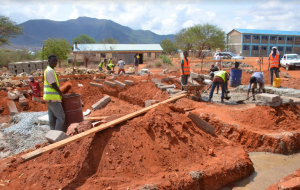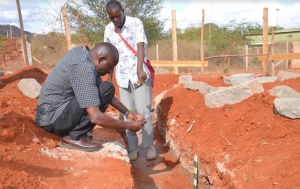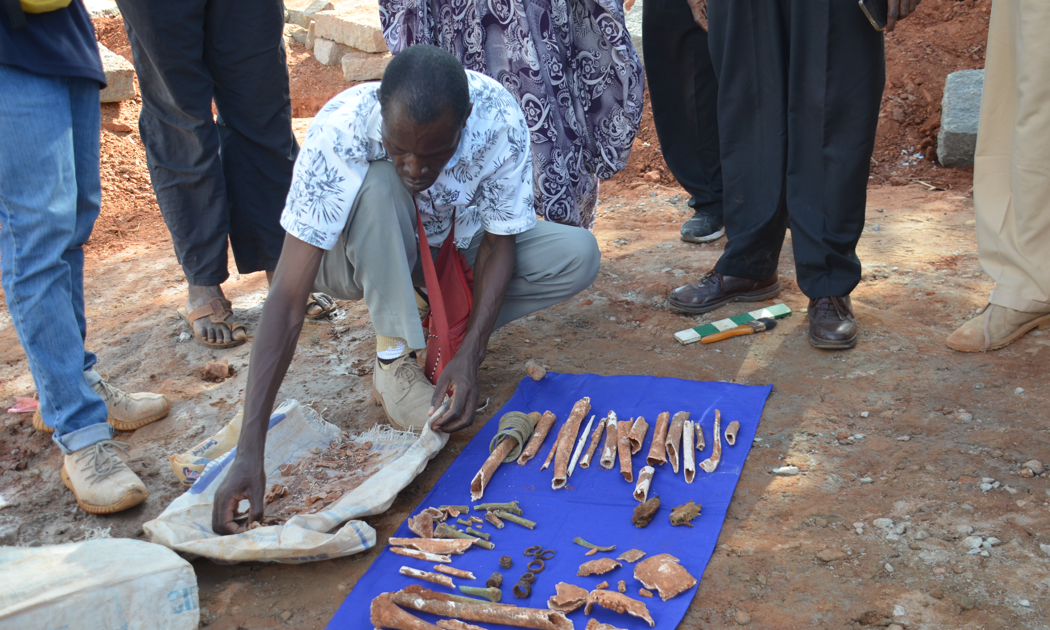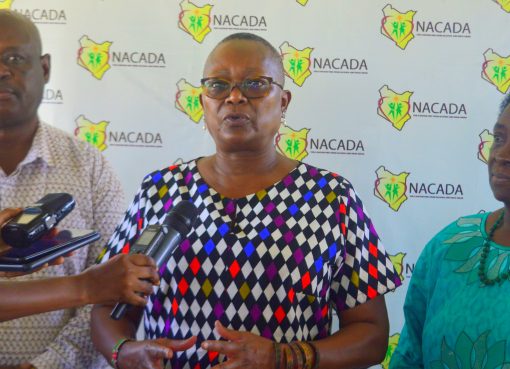It started as an ordinary construction site. Dozens of sweaty workers broke the hard ground, hauled bricks and mixed mortar as they constructed a twin classroom for special needs’ learners at Voi Primary School special unit in Voi sub-county.
A week later, the workers seem to have stumbled upon an undiscovered archeological site; a possible mass grave for thousands of undocumented African porters and soldiers who died in the World War 1 that was fought between 1914-1918.

“We stand at the cusp of a rare archeological find with great global significance. If the bones turn out to belong to Africans who participated in World War 1, we will have the first official grave site for our brothers who perished in the war,” says Mr. Willy Mwadilo, a World War 1 historian.
The discovery of several human bones, bangles, rings and shackles at Voi Primary School in Taita-Taveta County has triggered massive excitement amongst historians and cultural researchers. They have for years labored in vain as they struggled to establish the fate of fighters and porters of African descent who participated in WW1.
Little is known about porters’ resting place. Most narratives from the war indicate Africans’ bodies were simply left wherever they fell; be it in the bushes or in the open battlefields
Local historians refer to African porters as the hands and boots that won the war. Without the critical help by the Africans, World War 1 campaign in East Africa would not have been possible. However, historians, writers and WW1 documentarists from European ancestry appear to have conspired to treat Africans involved in this bloody pogrom as an insignificant footnote.
Porter and soldiers and whatever roles they played have been relegated to the backburner of the war. This is often cited as a deliberate move to deny them their rightful place in the history of war by edging them to the fringes of WW1. On the other hand, the white combatants are accorded larger-than-life presence for their alleged unmatched valor that is extolled in flowery terms whenever the war is mentioned.

This appalling indignity suffered in life seems to have continued to stalk Africans even in death. While white soldiers, eulogized as having died heroically, remain buried properly in well-maintained cemeteries and have commemorative plaques with their names, such privileges are not extended to Africans.
Not a single grave exists to honor their sacrifices. This gross discrimination even in the afterlife that drove local historians to embark on decades-long search for the elusive remains of Africans porters.
“We have always sought to know where Africans were buried. This might be the first realistic opportunity we have to honor them properly,” said Mwadilo.
During the East African Campaign of WW1 fought between Britons and Germans in 1914 to 1918, Taita-Taveta County was a key flashpoint with the region acting as venue to some of the bloodiest encounters between Britons and Germans.
The county is littered with rare historical sites with actual impact in war. In the outskirts of Voi town is a War Cemetery where British soldiers are buried. The well-maintained cemetery complete with a picket fence is maintained by Commonwealth War Graves Commission. There is also an Indian Cemetery at Maktau area in Mwatate sub-county where Indian’s Baluchi are buried. In Taveta sub-county, there is another war cemetery where Germans and British soldiers are buried.
When supplies and porters arrived at the Voi Railway station, they would land at Kariokor grounds where they would be divided into groups. The supplies were packed into ox-wagons for the torturous journey through the wildlife-infested to the battlefront at Salaita Hill in Taveta.
Incidentally, the Voi Primary School where the bones were discovered is within this Kariokor locality raising the possibility of linkages to WW1.
In Mwatate sub-county, historical WW1 sites include Mwashoti Fort inside Taita Hills sanctuary. The British soldiers established an observatory point. The fort was also used as a temporary shelter for soldiers to rest before they were dispatched to the battlefront in Salaita in Taveta.
Next to the fort is the Mile 27 Bridge. This was a critical asset that became a key target for the German demolition team. Blowing up the railway bridge would have disrupted the British supplies and tilted the war in favor of Germans. British soldiers deployed to guard this bridge repulsed Germans who wanted to destroy it.
The Maktau area in Mwatate is famous for being the site where the first plane in East Africa took off. The plane was shipped in pieces and carted through the bushes by ox-wagons before it was assembled at Maktau and took off to support the Britons in the fight against the Germans.
In Taveta, Salaita Hill remains the epicenter of the battle. It was here that hundreds of soldiers from both sides died fighting trying to control this strategic hill. Another historical site is inside The Tsavo West National Park where the Sniper Baobab Tree is located. A legendary German female sniper colonized this massive tree to take out dozens of British soldiers as revenge for killing her soldier boyfriend.
While most of those sites are known, the question of the fate of African porters has never been fully answered until now.
National Museum of Kenya (NMK) officials’ state that the Voi site will have to wait for official verification before it is declared an archeological site worth exploring.
Mr. Jambo Haro, an archeologist with NMK, says the process of authenticating if it was an unmarked mass grave from WW1 era had already started. He added that the construction works over the site had contaminated the bones rendering them useless.
“This was an accidental find. Handling the bones and exposing them ruins their integrity. This compromises the accuracy when it comes to carbon dating because it cannot give us the exact epoch they belong to,” he explained.
To avoid further contamination, the construction works were temporarily suspended to allow archeologists and paleontologists determine if there was a need for further investigations. Such a confirmation would see massive mobilization of resources and manpower with countries that participated in the war including Britain, Germany, Australia and India becoming involved.
Mr. Philip Wanyama, Coast archeologist, spoke of the need to have controlled research and exposure of the bones that will be conducted by experts. He added that subterranean fossils are safer than those exposed unless the process of exposure is done by specialists.
He added that all archeological materials will be carefully picked and documented to provide insights about the owner.
“We have human and non-human bones. The research will give us a peek into the identity and social life of the person buried here,” he said.
The discovery comes two weeks before the county commemorates WW1 in 24th November.
By Wagema Mwangi





